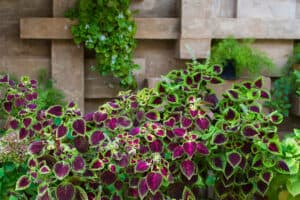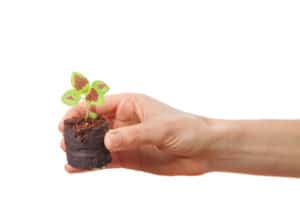Companion planting refers to cultivating two or more species close to each other for mutual benefit. Although research is scarce, anecdotal reports suggest that it is a highly effective practice. For example, Native Americans grew corn, squash, and beans together so that the corn would provide the beans with the height and surface to climb, and both, in turn, would provide the squash shade to survive.
Some of the benefits of companion planting are:
- Efficiency in combatting pests
- Reduced use of pesticides
- Improved nutrient uptake
- Increased vegetable production
- Enhanced pollination
How to Choose Coleus Companion Plants
Interestingly, coleus is a very hardy plant, easy to grow, and you probably won’t have any problems cultivating it. Thus, the variables to consider are what colors and textures you want to combine and what conditions both plants need to thrive.
As for colors and textures, there are an infinite number of unique cultivars, and no two coleus plants are alike. Therefore, you can combine them with other less colorful plants to make both plants stand out in your garden. Regarding growing conditions, most coleus cultivars prefer shade, so pairing them with taller plants that protect them from the sun will benefit them greatly.
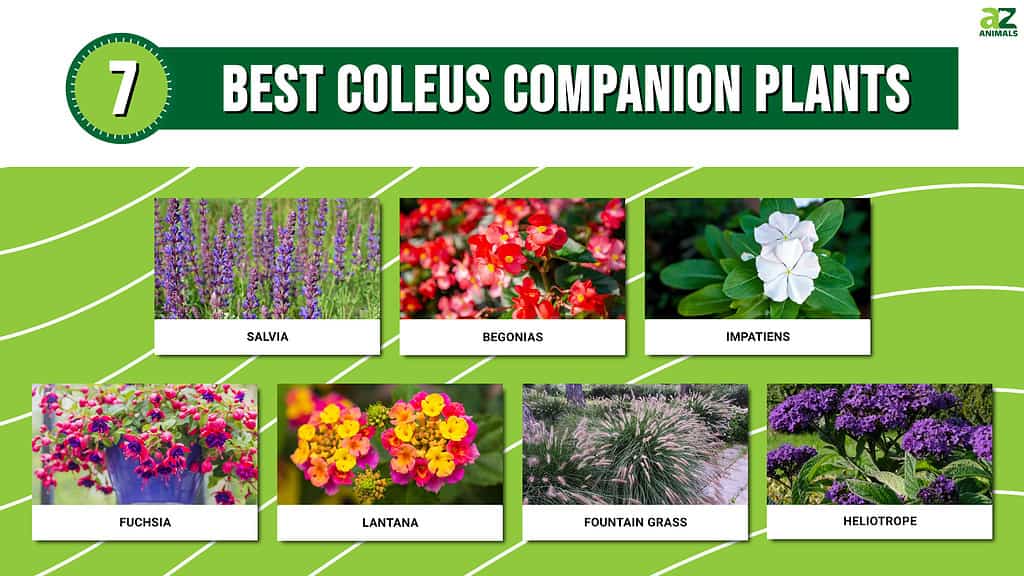
Best Coleus Companion Plants
Salvia
Salvia officinalis, popularly known as sage, is an excellent choice to cultivate alongside coleus. This aromatic plant is a close relative of coleus, also belonging to the Lamiaceae family. Therefore, it shares certain similarities in care that make it a compatible ally. In addition, this plant is taller and more tolerant of sun, so it can provide your coleus with adequate shade. You simply need to pay attention to watering, as salvia is more drought tolerant, so you will need to find the right spot.
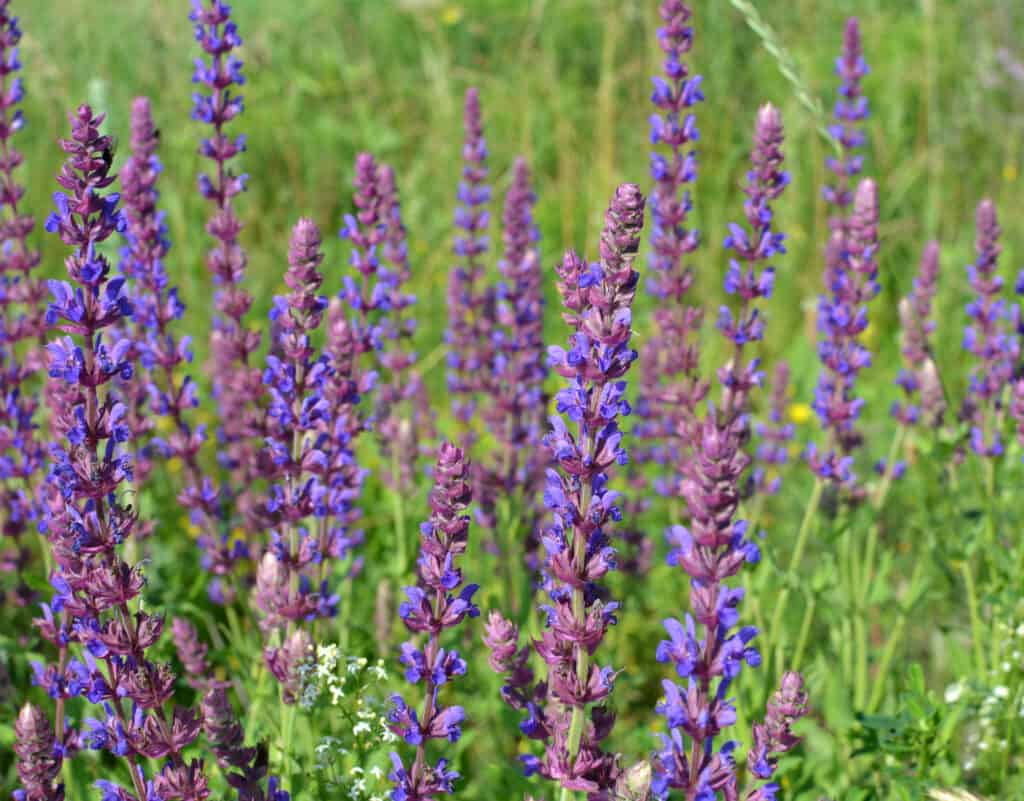
Salvia is a fantastic companion plant for coleus.
©iStock.com/Orest Lyzhechka
Begonias
Begonia semperflorens, also called ‘Wax begonia,’ is a species native to warm and humid places belonging to hardiness zones 10 and 11. They share similar growing requirements to coleus, so planting begonias and coleus in the same pot is an excellent idea. In addition, its oval-shaped leaves and colorful flowers will make a striking contrast to any coleus. An added benefit of growing these plants together in the same container is that you can simply bring the entire pot inside for winter.

Begonias and coleus are complementary of one another and make great companion plants.
©iStock.com/deaw59
Impatiens
Impatiens walleriana, often called touch-me-not, is a plant native to Africa and very popular worldwide. Like coleus, it prefers shade or filtered light and abundant watering without waterlogging the soil. It is a very pest-resistant plant, and in addition, its vibrantly colored flowers last from spring to fall and are the perfect match for any coleus cultivar!
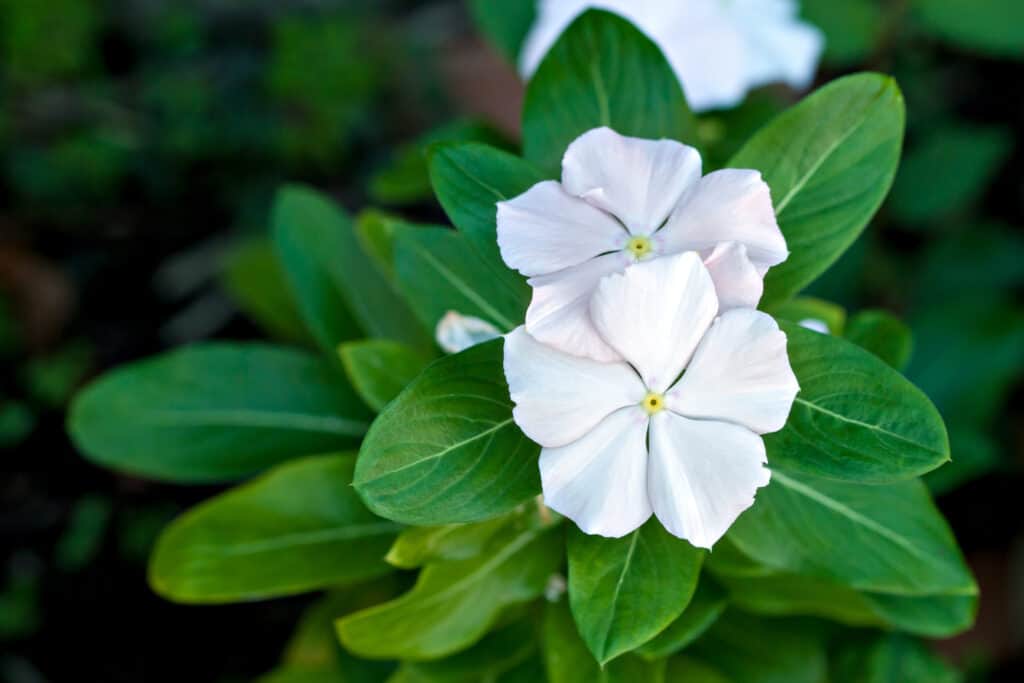
Impatiens are available in a variety of colors and make great companion plants for coleus.
©Tikta Alik/Shutterstock.com
Fuchsia
These exotic perennials are the ideal companion for coleus, as they also love the shade. This beauty hails from Central and South America and prefers to avoid direct sun. Since they need a well-drained substrate, you should grow them in pots, where their dramatic, pendulous, bell-shaped flowers can accompany any coleus cultivar.
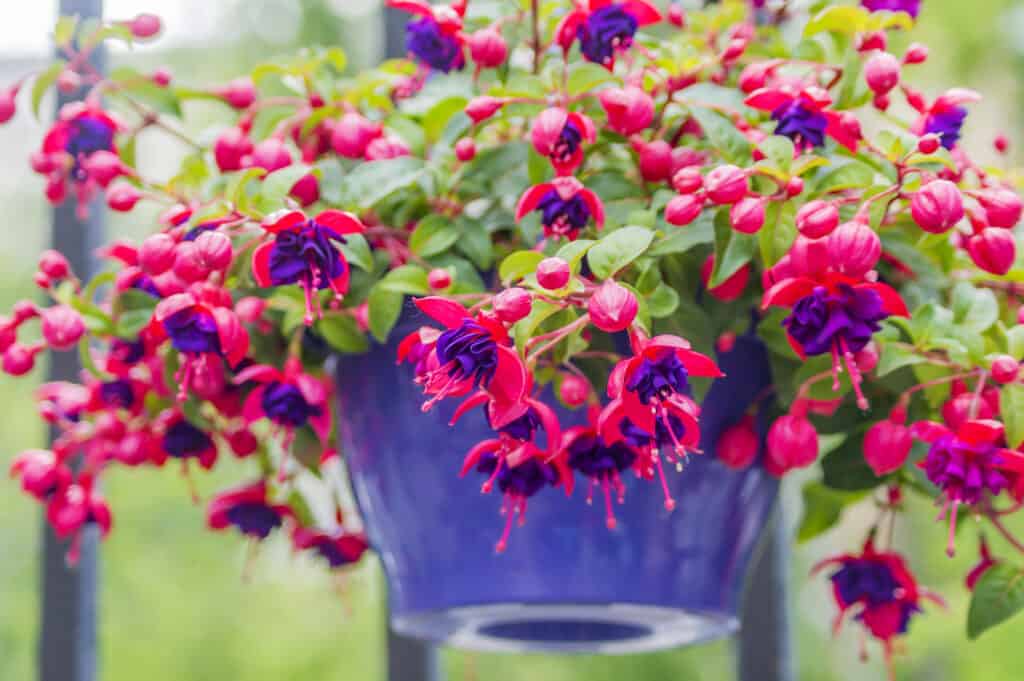
Fuchsia is brilliantly colored and pairs nicely with a traditional coleus plant.
©iStock.com/IKvyatkovskaya
Lantana
Lantana camara, commonly called just lantana, is another plant that thrives in the same hardiness zones as coleus, making it an excellent ally for sharing a pot or garden. Its bright flowers, which change color as the days go by, run the gamut of warm colors. This makes the plant a great combination with monochromatic coleus cultivars like ‘Limelight.’
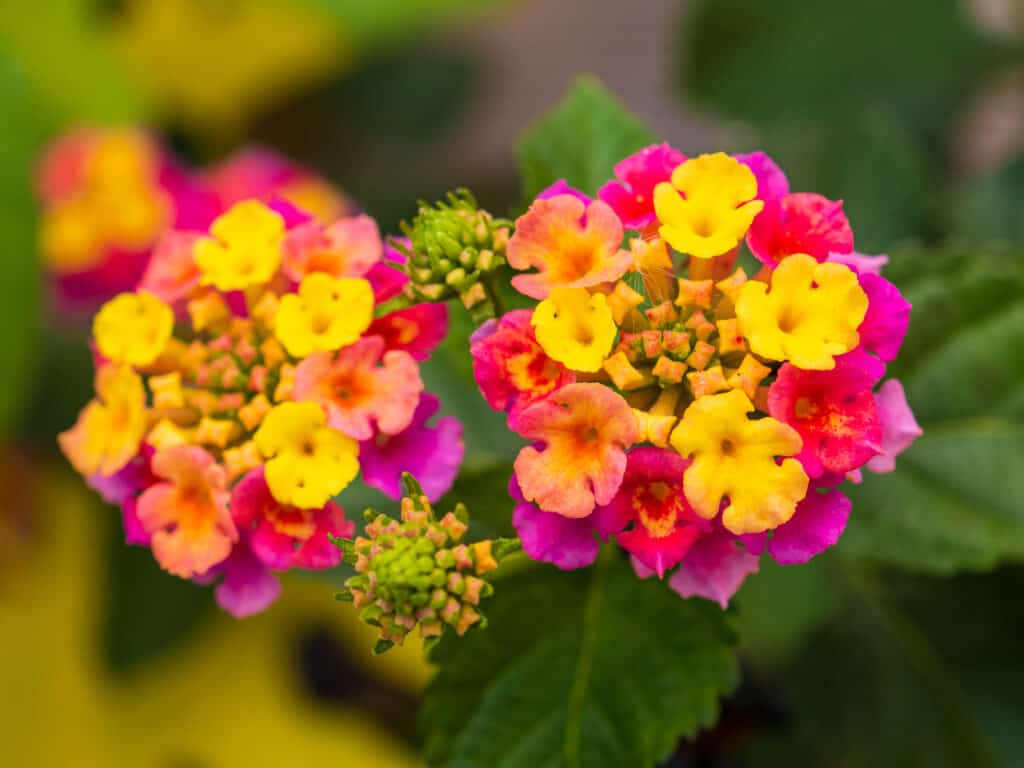
Lantana planted with limelight coleus create a vibrant palette for your landscaping.
©galitsin/Shutterstock.com
Fountain Grass
Pennisetum setaceum is a beautiful addition to any garden or interior and works well as a companion plant to any coleus cultivar, requiring similar care. Fountain grass grows 1 to 4 feet in height, forming dense mounds of soft flowers that dance in the wind like feathers. Combine them with any colorful coleus variety, such as ‘Henna’ or ‘Wizard Jade,’ to attract attention to your garden!

Fountain grass offers a striking contrast to coleus.
©Gabriela Beres/Shutterstock.com
Heliotrope
Heliotropium arborescens requires a little more care than coleus, but it can nonetheless be the perfect companion to any coleus cultivar. Its delicate purple flowers have a sweetish scent, which some gardeners describe as vanilla or cherry. This plant can grow as a shrub and is native to Peru, Bolivia, and Colombia. It shares a hardiness zone with coleus; just be sure to feed it a little more often and pinch off its flowers to encourage bushiness and ensure more fragrant, long-lasting blooms!
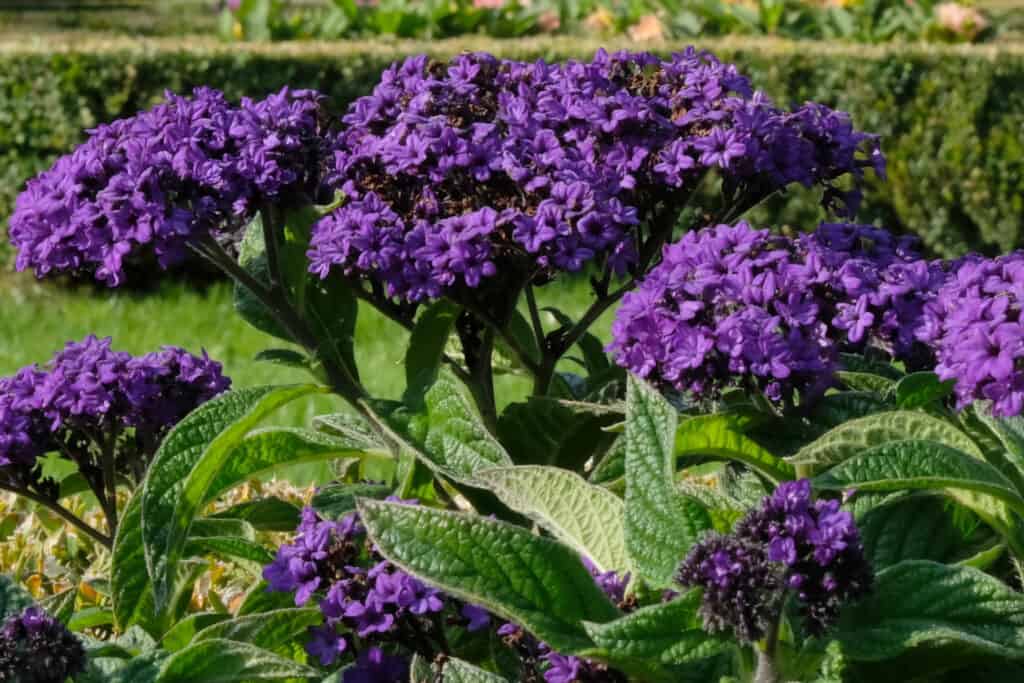
Heliotrope and coleus are great companion plants.
©iwciagr/Shutterstock.com
Companion Planting: Is It Scientifically Proven?
Although the concept of companion planting is widespread in the cultivation literature, we rarely find scientific evidence that supports it. However, anecdotal reports are clear: diversifying your crop can enrich your garden or vegetable garden. That’s why we decided to investigate which benefits of companion planting are supported by science.
First, this practice can contribute to biological pest control since you can plant species that attract the natural enemies of the pests present in your garden. In addition, you can plant other species that keep your pests at bay with the smell of their essential oils or by acting as a chromatic trap. Moreover, certain species act as a physical barrier, preventing common pests such as aphids, moths, or whiteflies from accessing your plant.
As if it wasn’t enough, planting varieties of different shapes and sizes can offer protection from sunlight for other shade-preferring species — such as coleus — and a surface to lean on or climb on. Certain plants develop a powerful root system that benefits both, preventing weeds from crowding your favorite plant out of the pot.
For example, planting either variety of coleus as bedding for a taller plant in the same container will help it retain water while sharing nutrients from the soil. Finally, while this technique has many advantages, you should investigate each species separately to avoid allelopathy. That is, you should not mix plants that release chemicals that may negatively affect the growth of the rest of your garden. For example, black walnut (Juglans nigra) releases chemicals that significantly affect corn and beans.
What Is Crop Rotation?
Crop rotation is a technique as old as agriculture itself that consists of rotating the species planted in the same field. Like companion planting, it brings numerous benefits, such as pest reduction and soil enrichment, which will help you grow healthier plants.
This technique works because pests infiltrate the soil when you plant a single species in the same place for an extended period. In this way, the absence of their host plant will cause an effective decline of the pest. In addition, certain species consume specific nutrients and contribute others to the soil. Therefore, you could deplete the substrate’s resources in a few cycles.
By changing crops, other species can take advantage of the nutrients discarded by other plants and enrich the soil with new ones. This is an ingenious and effective way to balance the resources in your garden so that all your species can thrive equally.
What Other Species Can I Grow Together?
Fortunately, you have multiple choices of plants that you can combine so they take care of each other. Many of them are edible; for example, you can plant most of your salad ingredients. It is a good idea to plant tomatoes along with lettuce, cucumbers, spinach, or rosemary to harvest delicious salads and reduce pests.
Another wise partnership involves mixing squash with beans, something you can easily do in a pot. Both plants are versatile, so you can set stakes for one to climb and the other to act as a bedding plant. And then, you can eat them both!
As for flowering plants, a popular combination is to plant geraniums around roses. Their particular scent keeps away aphids and other pests that plague this beautiful flower. If you want to add a colorful touch to your garden, you can plant daisies and petunias since both combine very well with each other, share similar care, and you can create a colorful and attractive design.
Learn even more about this amazing plant! Check out our complete guide to coleus plants here.
Up Next:
- When to Plant Coleus by Zone
- Coleus Plants Indoors: How to Successfully Grow Coleus in a Pot
- Coleus Plant Care Guide: Growing Healthy Coleus Plants
- Do Deer Eat Coleus?
The photo featured at the top of this post is © Arina Trapeznikova/Shutterstock.com
Sources
- Crafty for Home, Available here: https://craftyforhome.com/2018/07/06/planting-coleus-in-a-container/
- University of Massachusetts, Available here: https://ag.umass.edu/home-lawn-garden/fact-sheets/companion-planting-in-vegetable-garden
- Bean Growing, Available here: https://www.beangrowing.com/what-to-plant-with-coleus-in-a-container/
- University of Tennessee, Available here: https://extension.tennessee.edu/publications/documents/w235-f.pdf
Thank you for reading! Have some feedback for us? Contact the AZ Animals editorial team.



